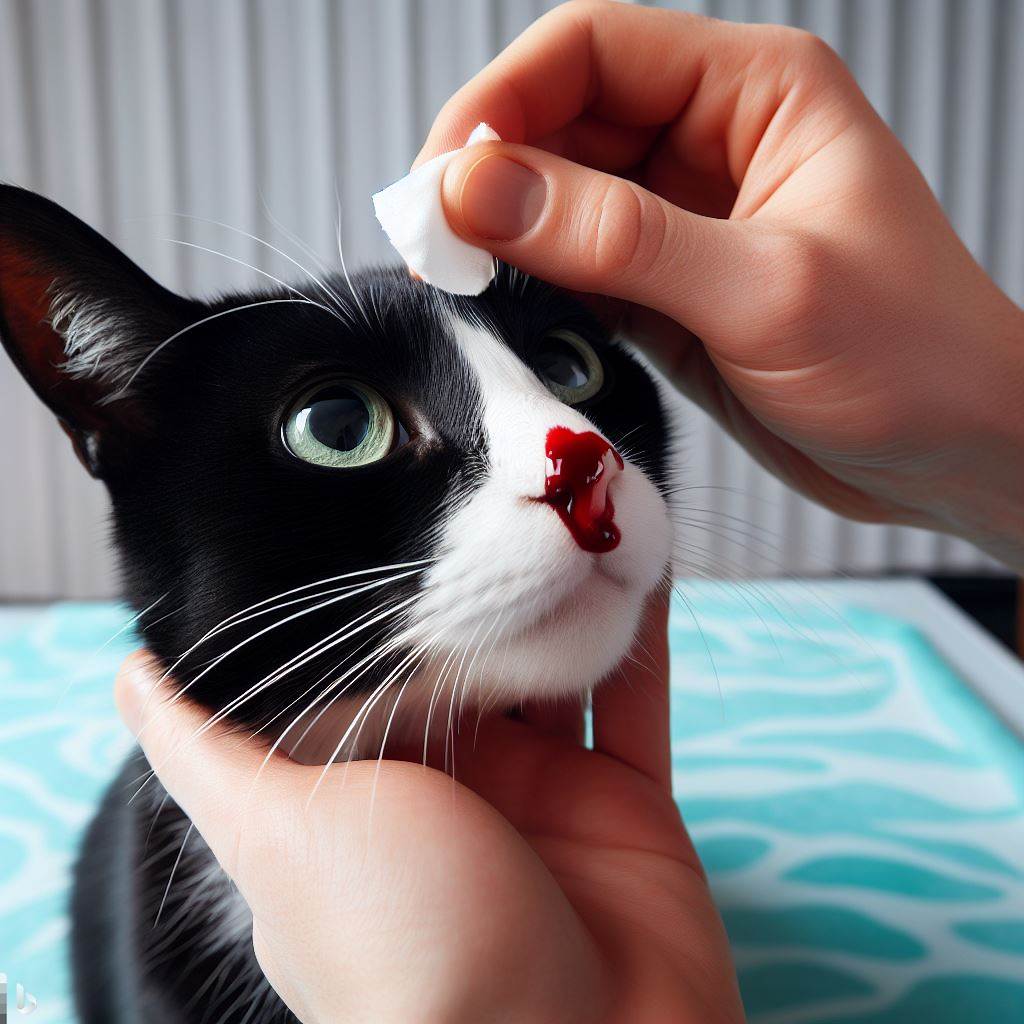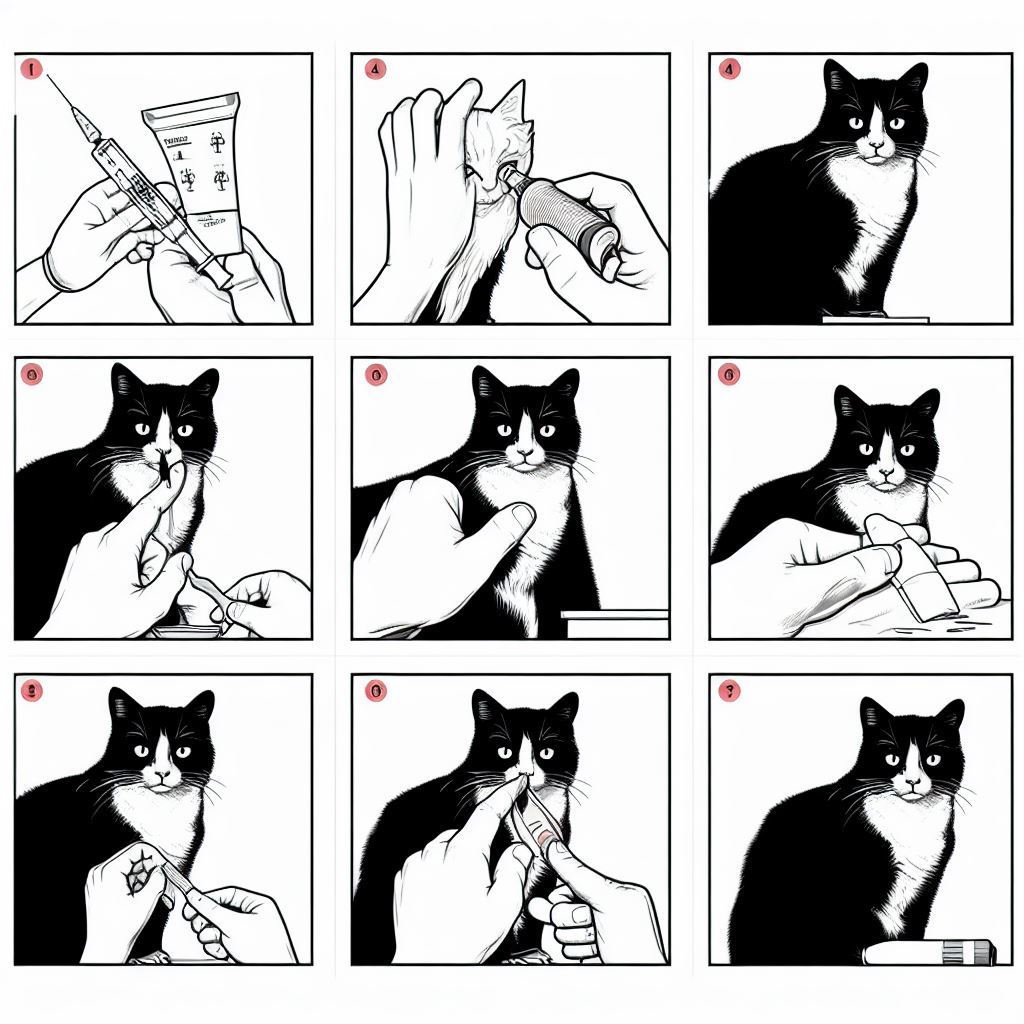Nosebleeds can be scary when your feline friend is affected. You may suddenly notice blood dripping from their nose or find dried blood around their nose and mouth. While not normally life-threatening, frequent or severe nosebleeds in cats require veterinary attention. This complete guide will teach you how to recognize, manage, and prevent nosebleeds in cats.
What Causes Nosebleeds in Cats?
Before learning how to make nosebleeds stop, it helps to understand what causes them in the first place. Here are some of the most common reasons for nosebleeds in cats:
Infections – Upper respiratory infections, sinus infections, and abscessed teeth can all lead to nosebleeds. Inflammation and irritation from infection causes delicate blood vessels in the nose to burst.
Allergies – Allergic reactions to things like pollen, dust mites, and mold can trigger nosebleeds, especially if your cat scratches at their nose. This can damage the tender nasal tissue.
Foreign Objects – Small objects like grass seeds or fabric fibers getting stuck in the nostrils can cause bleeding as they irritate the sensitive inner nose.
Tumors – Abnormal tissue growths in the nasal cavity, sinuses, or surrounding area may rupture and bleed. These are often cancerous tumors.
Blood Clotting Disorders – Conditions like hemophilia prevent blood from clotting normally, increasing the risk of prolonged nosebleeds.
Trauma – Injury to the nose from a fall, hit, or scratching can damage blood vessels and lead to external or internal bleeding.
Toxins – Chemical irritants, cigarette smoke, and air pollution can inflame nasal passages and cause nosebleeds.
Dry Air – Low humidity and dry, dusty air can make the nasal membranes dry and prone to cracking and bleeding.
Now that you know why kitty nosebleeds happen, let’s go over the steps to make them stop fast.
How to Quickly Stop a Nosebleed in Progress

When you notice your cat has a nosebleed, quick action is required to get the bleeding under control. Here are tips for stopping nosebleeds fast:
Keep Your Cat Calm
A stressed, anxious, or excited cat will likely bleed more profusely. Gently wrap them in a towel or blanket to keep them still and quiet. Dim the lights, speak softly, and try to minimize what’s stressing them out.
Apply an Ice Pack
Gently holding an ice pack or cold compress against the bridge of the nose constricts local blood vessels. This reduces blood flow and pressure in the nasal area to slow bleeding.
Apply Direct Pressure
Use a clean cloth or gauze pad to apply firm, direct pressure onto the bleeding nostril for 5-10 minutes. Maintain steady pressure – don’t repeatedly lift and replace. This encourages clotting. Pinch the nostril closed if needed.
Keep Their Head Elevated
Position your cat’s head higher than their heart. This uses gravity to reduce blood flow to the injured nasal area, making it easier to stop the bleeding.
Monitor Bleeding Closely
If bleeding persists after 10-15 minutes of cold compress and direct pressure, seek veterinary assistance immediately. Uncontrolled nosebleeds can quickly become an emergency.
Avoid Blood Thinners
Do not give your cat any medications like aspirin that thin the blood and impair clotting. Let injuries clot naturally.
When to Visit the Vet for Nosebleeds
While you can manage minor nosebleeds at home, they warrant veterinary examination in the following circumstances:
- Bleeding lasts longer than 20 minutes despite treatment
- Bleeding is rapid, heavy, or uncontrollable
- Cat seems weak, lethargic, or collapses from blood loss
- Nosebleeds happen frequently (more than once a month)
- Other symptoms like breathing issues, swelling, or discharge
- Clotted blood is blocking nostrils or airflow
- Your cat has a known clotting disorder
Your vet will figure out why nosebleeds are occurring and provide appropriate treatment. For heavy bleeding, they may pack the nostrils, cauterize vessels, or give IV fluids and clotting aids. They can also screen for underlying issues like infection, cancer, or blood diseases. Don’t wait with concerning nosebleeds – it’s better to be safe than sorry.
At-Home Treatment and Prevention
Between nosebleed episodes, there are several helpful at-home remedies and prevention strategies to reduce occurrence and severity.
Feed Soft Foods
Avoid hard, crunchy kibble while your cat’s nose heals, as this could re-injure tender scabs and membranes. Feed moist canned food or add water to dry food to soften it up.
Provide Gentle Nasal Rinses
Use a bulb syringe with saline solution to softly flush any drying blood clots from your cat’s nostrils. This keeps their airways clear.
Apply Antibiotic Ointment
Dab a small amount of veterinarian-recommended antibiotic ointment just inside the edges of the nostrils with a cotton swab. This prevents bacterial infection as the area heals while keeping nostrils moist.
Control Allergy Symptoms
If allergies cause your cat’s nosebleeds, eliminate allergen sources and treat with antihistamines as prescribed by your vet. Air purifiers and humidifiers also help.
Prevent Trauma
Trim nails to avoid scratch injuries. Inspect toys and living areas and remove small objects that could get stuck in nasal passages. Cover sharp edges of furniture. Keep cats indoors to avoid outdoor hazards and altercations with other animals.
Add Moisture to the Air
Use humidifiers and place hydrating fountains around your home, especially near heating and cooling vents where air gets dried out. This prevents nasal dryness and cracking.
Quit Smoking and Avoid Irritants
Do not smoke inside if you have cats, and avoid use of strong chemicals/cleaners that could irritate nasal passages. Keep cats away from dusty construction zones or fireplace soot.
Schedule Veterinary Checkups
Have your veterinarian periodically examine your cat’s nose, mouth, and sinuses for any abnormalities, infections, or objects lodged inside. Early treatment prevents complications.
Monitor for Signs
Watch for any repeated bleeding, breathing issues, swelling, discharge, weakness, or other symptoms. Keeping records helps your vet determine causes.
Common Medications and Treatments for Cat Nosebleeds
If nosebleeds persist, vets may prescribe medications or treatments to get the underlying problem under control, including:
- Antibiotics – For bacterial infections causing inflammation and bleeding.
- Antihistamines – To reduce allergy symptoms and minimize nasal irritation.
- Steroids – Help reduce swelling from infection, allergies, or tumors.
- Surgery – May be required to remove foreign objects, tumors, abscesses or other problematic tissue.
- Cauterization – Burning off blood vessels to stop heavy bleeding.
- Blood transfusions – To replace blood loss in severe cases.
- Vitamin K therapy – Can help improve clotting in cats with bleeding disorders.
- Chemotherapy/radiation – For cancerous tumors involving the nasal area.
- Blood pressure medication – Helps prevent bleeding if hypertension is the cause.
Follow your vet’s treatment plan closely and notify them if nosebleeds return or worsen. Proper management ensures your cat recovers smoothly and avoids complications.
Preventing Nosebleeds: Tips for Cat Owners

Here is a handy checklist of proactive measures you can take as a cat parent to lower the risks of nosebleeds:
- Maintain a clean, allergen-free home environment.
- Address respiratory infections quickly with veterinary care.
- Brush cats frequently to remove dust and dander from their fur.
- Avoid exposure to cigarette smoke, chemical fumes, and fragrances.
- Use air filters and humidifiers, especially in dry winter months.
- Groom cats regularly to prevent matted fur around their nose.
- Switch to high-quality cat food with omega fatty acids for skin and coat health.
- Discourage nose scratching and pawing to prevent self-trauma.
- Ensure cats stay hydrated with ample fresh drinking water.
- Have cats screened annually for dental disease, blood disorders, and nasal tumors.
- Keep their nails trimmed to reduce scratch injuries.
- Learn feline first aid like applying pressure and cold compresses.
- Invest in pet insurance to make vet care affordable.
When to Take a Nosebleed Seriously
While most feline nosebleeds resolve quickly on their own, bleeding can sometimes indicate a serious health problem requiring emergency care. Rush your cat to the vet or animal ER if:
- Blood flows steady and heavy from the nose
- Bleeding lasts longer than 20-30 minutes
- Cat seems very weak, lethargic, or collapses
- Gums and tongue appear pale from blood loss
- Breathing seems obstructed by blood clots
- Vomiting or coughing up blood
- Recent major nasal trauma like a fall or hit by car
- Known clotting disorder or on blood thinner medication
- Recurring nosebleeds (more than 1-2 times monthly)
Prolonged, heavy nosebleeds can quickly lead to dangerous levels of blood loss in cats. Immediate veterinary treatment is crucial. Watch for signs of shock like rapid heart rate, pallor, cool extremities, weakness, or unconsciousness. Try to stabilize your cat until you can reach emergency vet care.
The Takeaway: Act Fast but Avoid Panic
Nosebleeds can arise suddenly and look dramatic, but try to remain calm. Having the right response plan makes all the difference. Gently controlling the situation, applying pressure, and seeking prompt veterinary care as needed allows you to take action without panic. With proper treatment for the underlying cause, most cats make a full recovery. Your loving attentiveness and prompt care helps get nosebleeds under control fast so your kitty feels better in no time.




